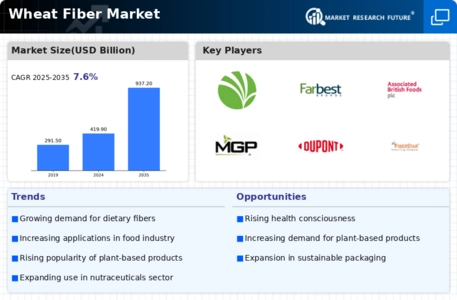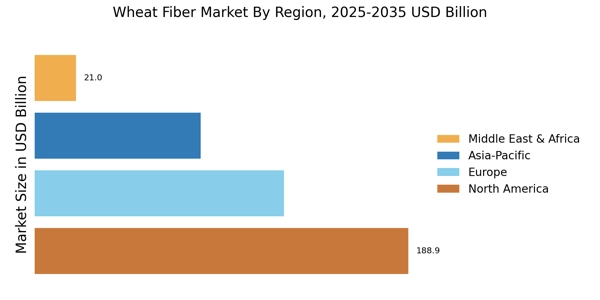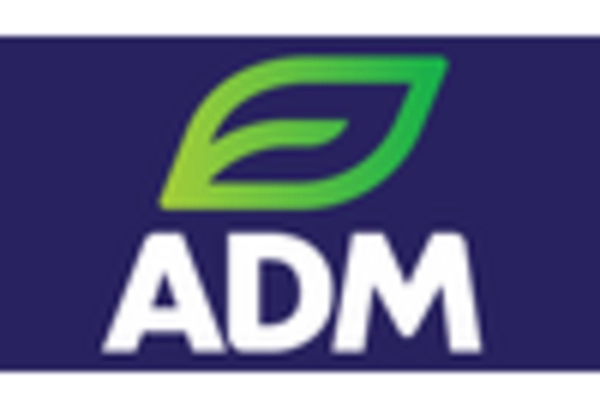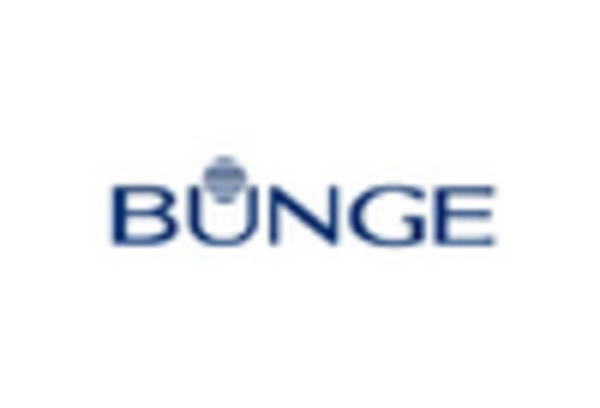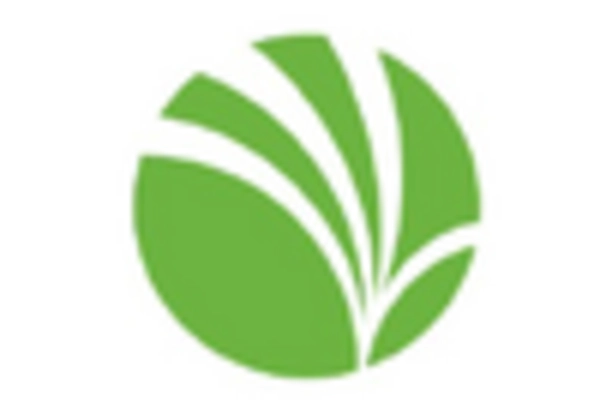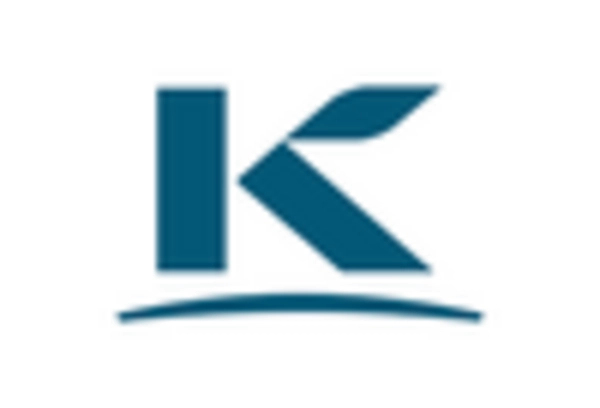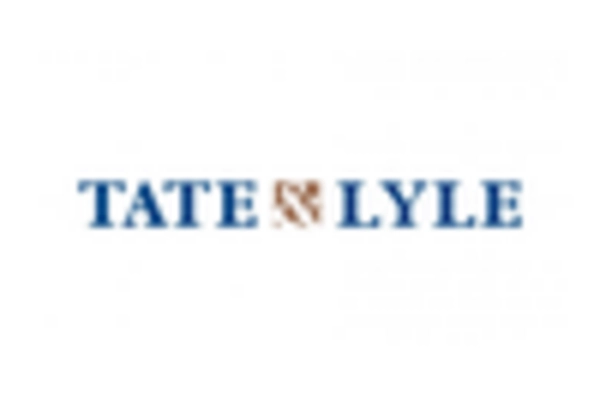Rising Demand for Functional Foods
The Wheat Fiber Market is experiencing a notable increase in demand for functional foods, which are perceived as beneficial for health beyond basic nutrition. This trend is driven by consumers' growing awareness of health issues, such as obesity and diabetes, leading to a preference for products that offer health benefits. Wheat fiber, known for its ability to aid digestion and promote satiety, is increasingly incorporated into various food products. According to recent data, the functional food market is projected to reach substantial figures, with wheat fiber playing a crucial role in this growth. As consumers seek healthier options, the Wheat Fiber Market is likely to expand, catering to the evolving preferences of health-conscious individuals.
Sustainability Trends in Food Production
The Wheat Fiber Market is influenced by the growing emphasis on sustainability in food production. Consumers are increasingly concerned about the environmental impact of their food choices, leading to a preference for products that are sustainably sourced and produced. Wheat fiber, derived from a renewable resource, aligns with these sustainability goals. As companies adopt eco-friendly practices and promote transparency in their supply chains, the Wheat Fiber Market is likely to see a rise in demand. This shift towards sustainable consumption not only appeals to environmentally conscious consumers but also encourages innovation in product development, further driving the growth of the Wheat Fiber Market.
Expansion of the Bakery and Snack Food Sector
The Wheat Fiber Market is experiencing growth due to the expansion of the bakery and snack food sector. As consumers increasingly seek convenient and healthier snack options, manufacturers are incorporating wheat fiber into their products to enhance nutritional value. The bakery segment, in particular, is witnessing a trend towards high-fiber bread and baked goods, which cater to health-conscious consumers. Market data suggests that the snack food industry is projected to grow significantly, with wheat fiber playing a pivotal role in this transformation. This expansion indicates that the Wheat Fiber Market is well-positioned to capitalize on the evolving preferences of consumers seeking healthier snack alternatives.
Increased Awareness of Dietary Fiber Benefits
The Wheat Fiber Market is benefiting from heightened awareness regarding the importance of dietary fiber in daily nutrition. Research indicates that a significant portion of the population does not meet the recommended daily intake of fiber, which has led to a surge in interest in fiber-rich products. Wheat fiber, in particular, is recognized for its health benefits, including improved digestive health and potential weight management. As educational campaigns and health organizations emphasize the role of fiber in preventing chronic diseases, the Wheat Fiber Market is poised for growth. This trend suggests that manufacturers may increasingly focus on incorporating wheat fiber into their products to meet consumer demand for healthier food options.
Regulatory Support for Healthier Food Options
The Wheat Fiber Market is positively impacted by regulatory support aimed at promoting healthier food options. Governments and health organizations are increasingly advocating for higher dietary fiber consumption as part of public health initiatives. This regulatory environment encourages food manufacturers to reformulate their products to include more fiber, particularly wheat fiber, which is recognized for its health benefits. As regulations evolve to support healthier eating habits, the Wheat Fiber Market is likely to benefit from increased product development and innovation. This trend suggests a collaborative effort between regulatory bodies and the food industry to enhance public health through improved dietary choices.


